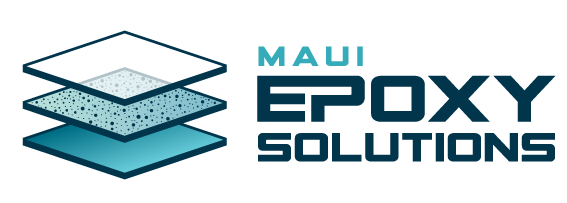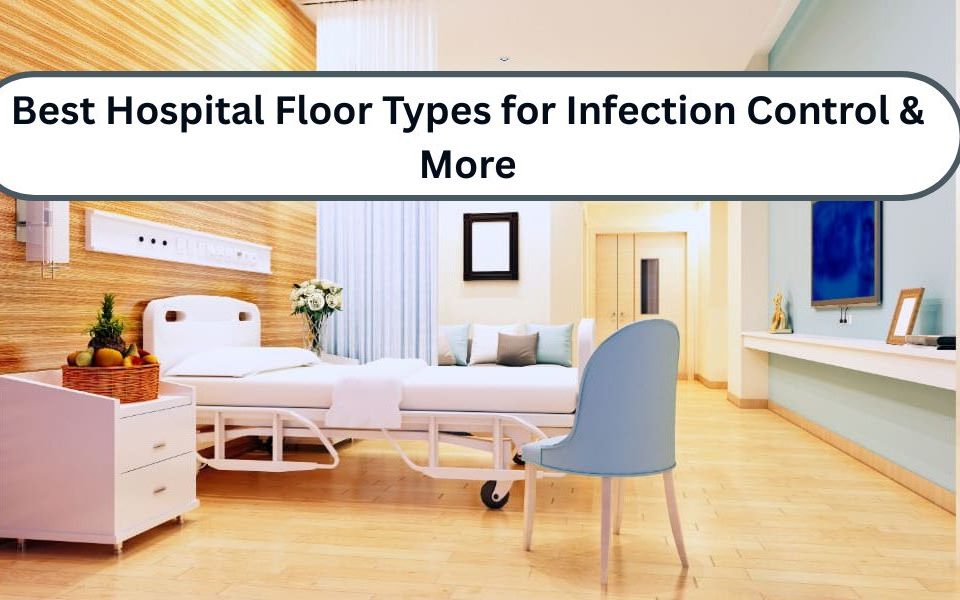
Creative Color Options for Your Flake Epoxy Flooring
July 5, 2024
Can Epoxy Floors Be Repaired? Things To Know
July 10, 2024Grinding is an essential first step before adding epoxy to your concrete floors. The top layer of concrete is removed during this operation to reveal a brand-new, porous surface. For the best epoxy adhesion and a long-lasting, durable surface, a well leveled concrete floor is necessary. If this step is skipped, the epoxy coating may not bind well, flake, or fracture too soon.
Instead of producing a rough surface that the epoxy can grip, grinding gets rid of impurities, unevenness, and old coatings that can get in the way of the epoxy’s ability to connect. The end product is a surface that is level, spotless, and ready for the epoxy coating. You’re creating the conditions for a successful epoxy flooring job by devoting time and energy to good concrete grinding.
Concrete Floors Types & The Safety Precautions
Concrete grinding is a process that involves using specialized equipment to remove the top layer of a concrete surface. It’s essential for preparing the floor for various applications, including epoxy coatings. By removing imperfections, contaminants, and old coatings, grinding creates a clean, even, and porous surface that enhances the adhesion of epoxy and other materials.
Several types of concrete grinders are available, each suited for different applications and project scales.
- Handheld Grinders: Ideal for small areas or spot repairs, these grinders offer portability but require more physical exertion.
- Walk-Behind Grinders: These machines are suitable for larger spaces and provide better control and efficiency compared to handheld grinders.
- Ride-On Grinders: Designed for extensive areas, these machines significantly increase productivity but require a larger workspace.
Safety is paramount when operating concrete grinders. The process generates dust, noise, and vibrations, which can be harmful if proper precautions aren’t taken. Essential safety gear includes a dust mask, safety goggles, earplugs, and sturdy work boots. Additionally, ensure adequate ventilation to reduce dust exposure. It’s also crucial to wear long sleeves and pants to protect your skin from flying debris.
Remember, concrete grinding can be a physically demanding task. If you’re unsure about your ability to handle the equipment safely, consider hiring a professional concrete grinding service.
Preparing for the Grinding Process & Choosing The Right Grinding Equipment
Thorough preparation is essential for a successful concrete grinding project. The first step is to clear the floor area entirely of any obstacles, such as furniture, appliances, or loose items. This ensures unobstructed access for the grinding equipment and prevents damage to belongings.
To protect surrounding areas from the inevitable dust and debris generated during the grinding process, consider the following measures:
- Plastic sheeting: Cover doorways, windows, and vents with plastic sheeting to create a barrier against dust. Secure the sheeting with tape to prevent air leakage.
- Duct tape: Use duct tape to seal any gaps around doors, windows, and baseboards.
- Drop cloths: Protect walls, cabinets, and other surfaces with drop cloths.
Choosing the right grinding equipment is crucial for efficiency and safety. Factors to consider include the size of the area to be ground, the desired level of smoothness, and your budget.
- Handheld grinders: Suitable for small areas and spot repairs, these are less powerful but offer greater maneuverability.
- Walk-behind grinders: Ideal for larger spaces, these machines provide more power and efficiency.
- Ride-on grinders: Best for extremely large areas, these offer high productivity but require ample space.
Remember to assess your physical capabilities and the complexity of the job before selecting a grinder. If you’re unsure, consulting with a professional can help you make an informed decision.
The Grinding Process Step-by-Step To Remove Imperfection
The initial grinding pass focuses on removing imperfections, unevenness, and any existing coatings from the concrete surface. Use a coarser grit grinding wheel to aggressively attack the floor, removing high spots, cracks, and delaminated areas. Cover the entire floor area, paying close attention to problem areas. This initial stage creates a rough base for subsequent grinding passes.
Achieving the desired level of smoothness requires multiple passes with progressively finer grit grinding wheels. After the initial rough grinding, switch to a medium-grit wheel to refine the surface and remove deeper scratches. Gradually transition to finer grits to achieve the desired level of smoothness. The final pass with the finest grit wheel should create a consistent and even texture.
Epoxy adhesion can be hampered by contaminants such curing chemicals, sealers, or outdated paint. Eliminating these poisons completely is essential. Concentrate on regions where residue or discolouration is evident. To properly remove impurities, use a mix of cleaning and grinding. Where impurities tend to collect, pay special attention to grout lines, corners, and edges. The best epoxy bonding results from a surface that is clear of contaminants.
Safety First Minimize Risks And Protect Yourself During Concrete Grinding
Concrete grinding is a potentially hazardous task, emphasizing safety is crucial. Proper protective gear is essential to safeguard your health and well-being. Invest in a high-quality dust mask designed for silica dust, safety goggles, earplugs or earmuffs, and sturdy work boots with non-slip soles. Long sleeves and pants can protect your skin from flying debris.
Safe handling of grinding equipment requires attention and care. Familiarize yourself with the grinder’s operation and safety features before use. Maintain a firm grip on the machine and avoid sudden movements. Regularly inspect the grinder for damage or wear and tear. Always disconnect the power supply when changing grinding wheels or performing maintenance.
Dust control is paramount to protect your respiratory health and the surrounding environment. Use a shop vacuum equipped with a HEPA filter to collect dust as you grind. Consider using a dust containment system or water mist to suppress dust generation. Adequate ventilation is essential to disperse airborne particles. Open windows and doors or use industrial-grade fans to improve air circulation.
Post-Grinding Cleaning and Epoxy Preparation
Thorough cleaning after grinding is key to remove residual dust and debris that can interfere with epoxy adhesion. Use a shop vacuum equipped with a HEPA filter to efficiently collect dust from the entire floor area. Pay attention to corners, edges, and crevices where dust tends to accumulate. For stubborn residue, damp mopping can help loosen and remove particles. Allow the floor to dry completely before proceeding to the next step.
Preparing the floor for epoxy involves several essential steps. Priming the concrete surface enhances epoxy adhesion by creating a bonding surface. Choose a high-quality epoxy primer specifically designed for concrete. Apply the primer according to the manufacturer’s instructions, ensuring even coverage.
Fill any remaining cracks or holes with a concrete repair compound. Select a product that matches the color of your concrete floor for a seamless finish. Allow the repair compound to cure completely before applying the epoxy.
For optimal epoxy adhesion, ensure the concrete surface is clean, dry, and free from contaminants. Remove any residual moisture or oil spots with a suitable cleaner. Consider using a degreaser for stubborn stains. Allow the floor to dry completely before applying the epoxy. Proper preparation is key to achieving a long-lasting and durable epoxy coating.
Conclusion – Grind Your Way to a Better Floor With Us
Properly grinding your concrete floor is a crucial step in achieving a durable and long-lasting epoxy coating. By following the outlined steps, including clearing the area, selecting the right equipment, and executing careful grinding passes, you’ll create an ideal surface for epoxy application. Remember, thorough cleaning and preparation are essential for optimal adhesion.
At Maui Epoxy Solutions, we understand the importance of a well-prepared concrete floor. Our team of experts specializes in concrete grinding and epoxy flooring services. If you’re seeking professional assistance to transform your concrete surface, we’re here to help. Contact us today for a free consultation and let us handle the process from start to finish.




